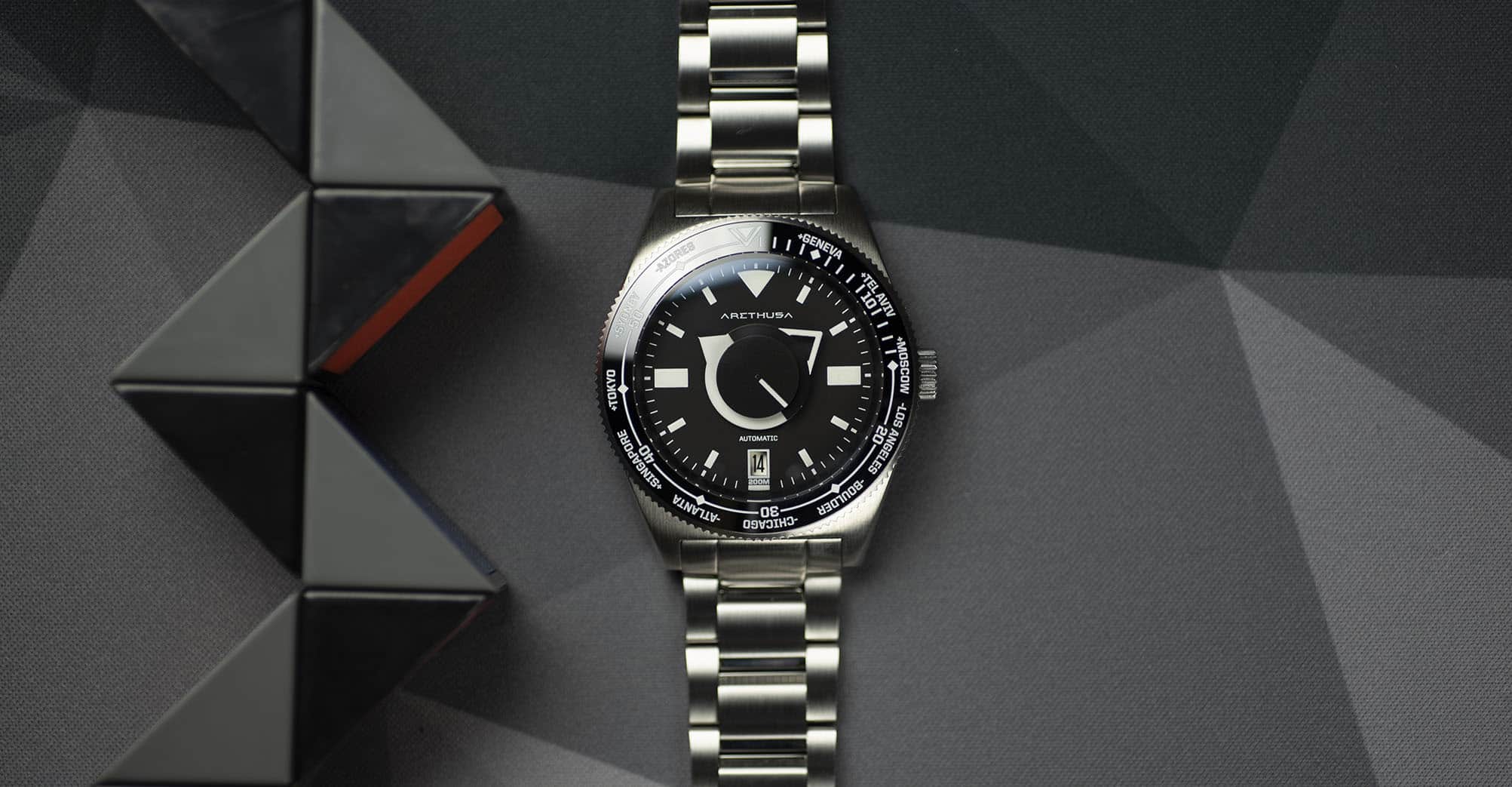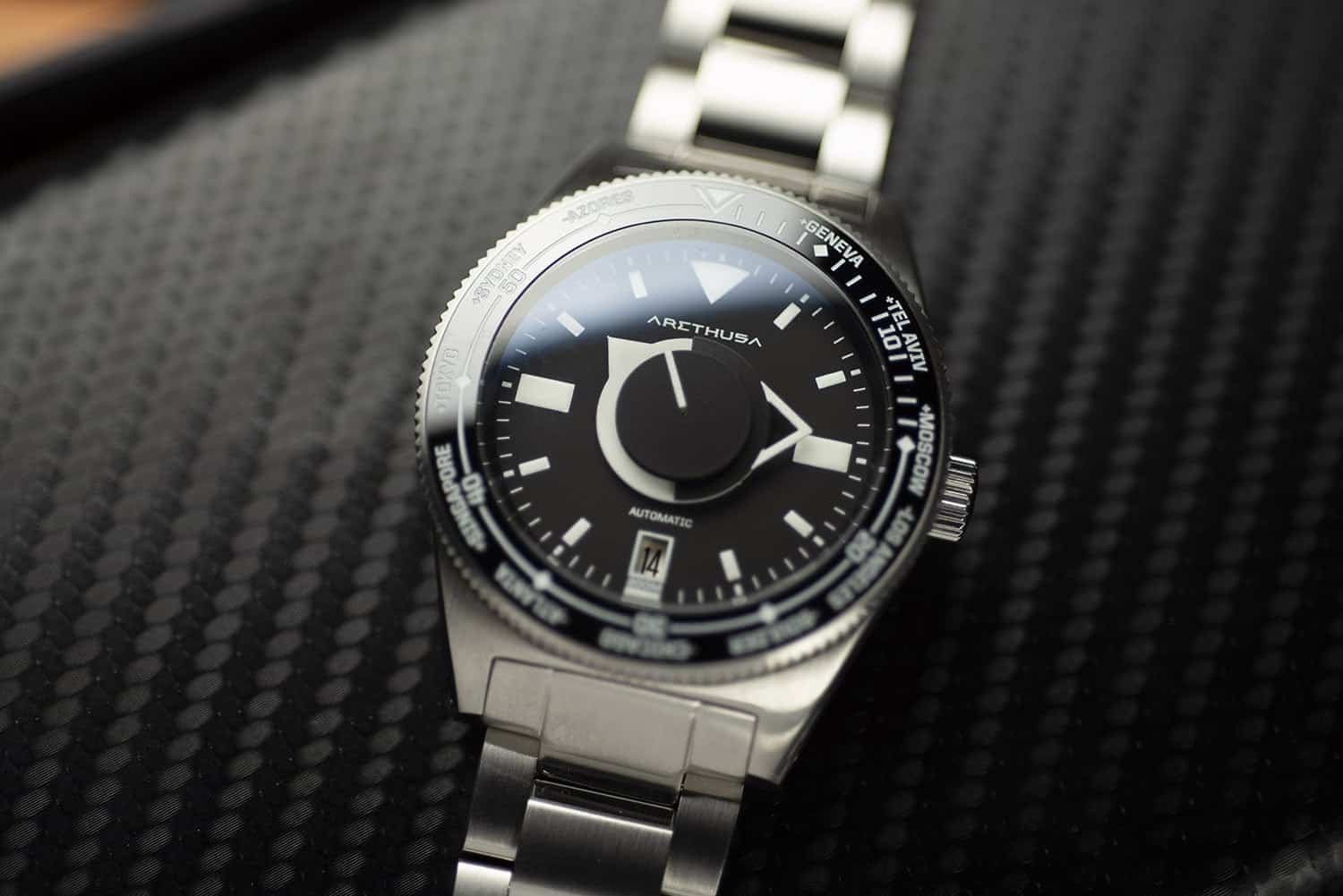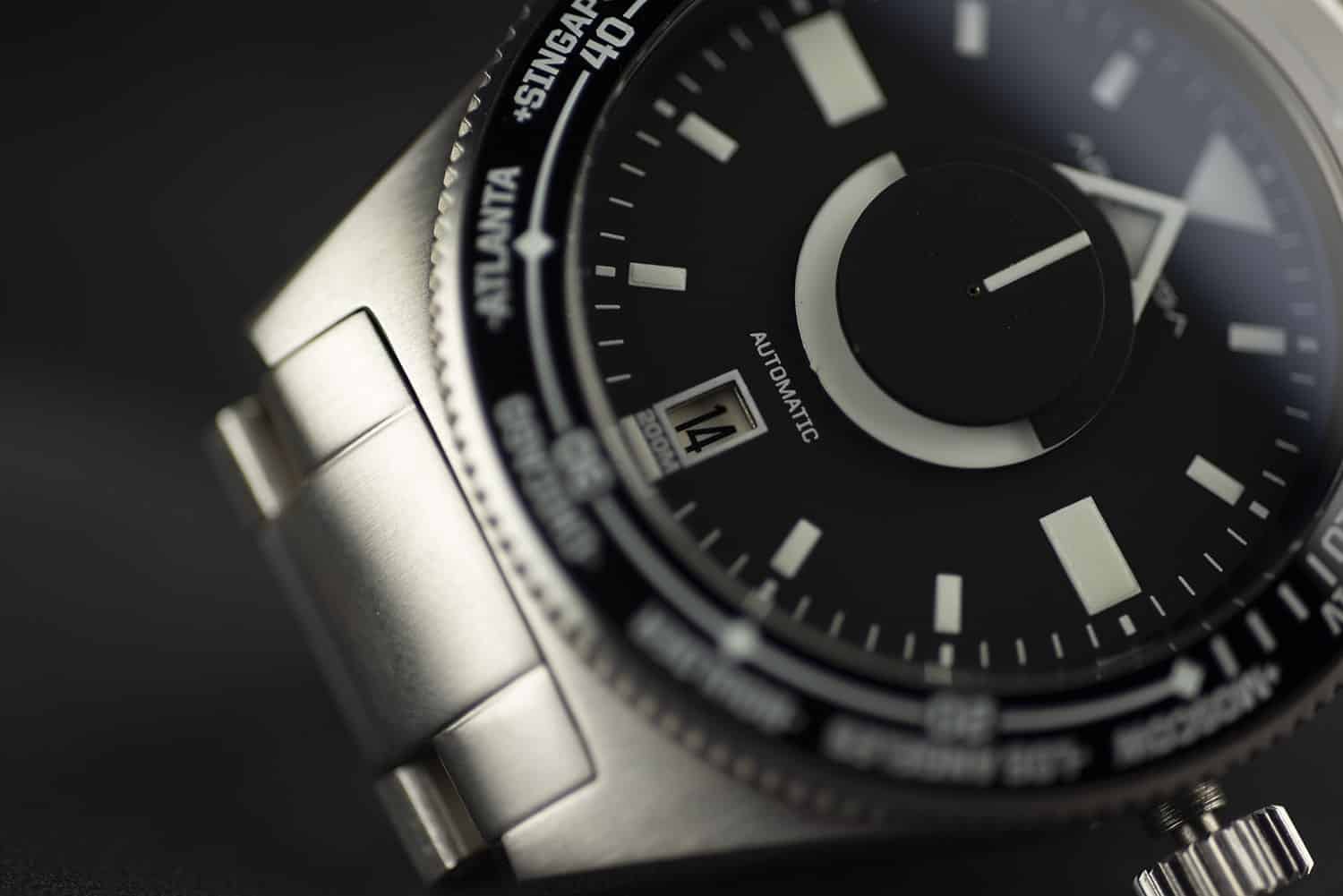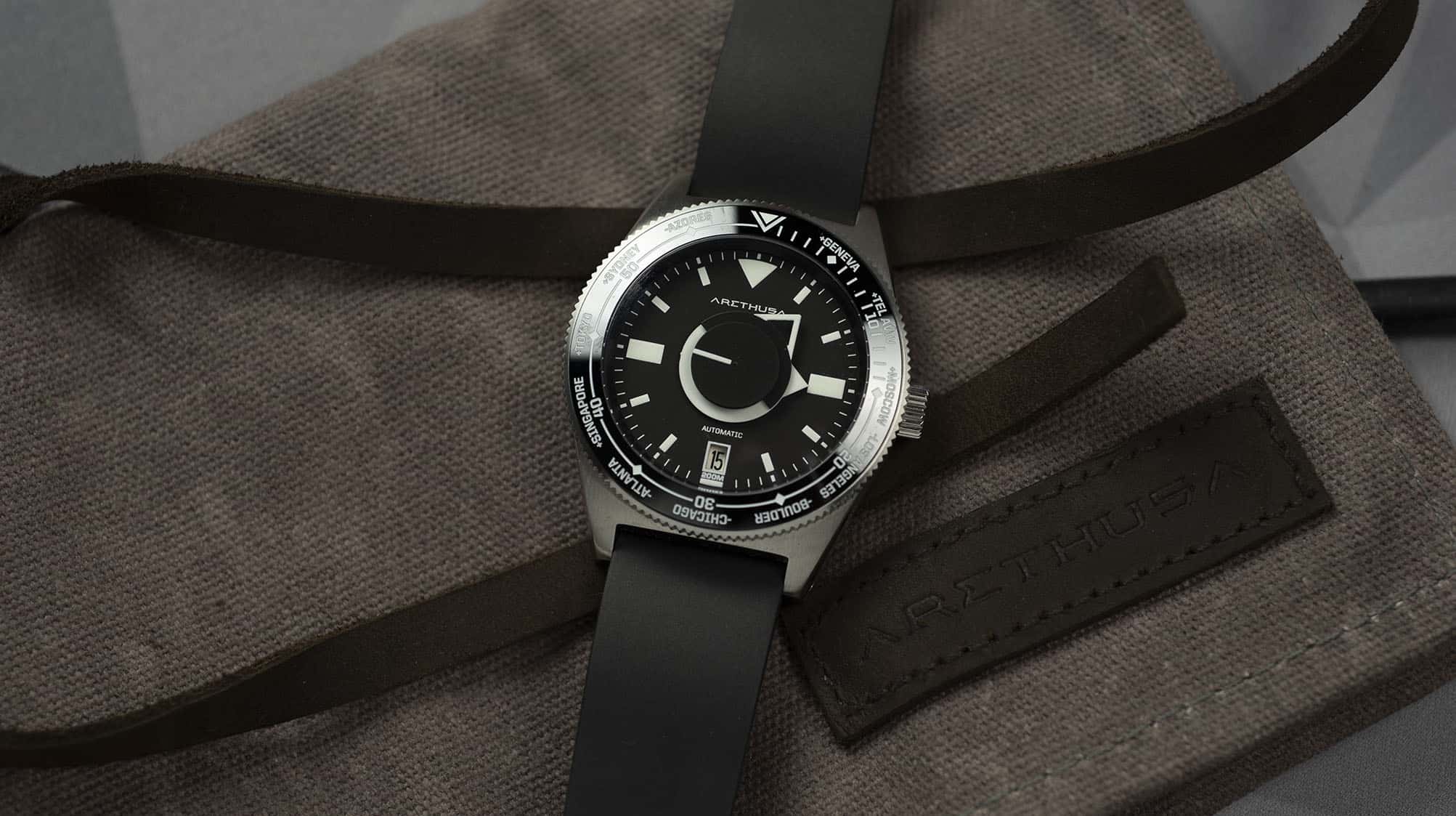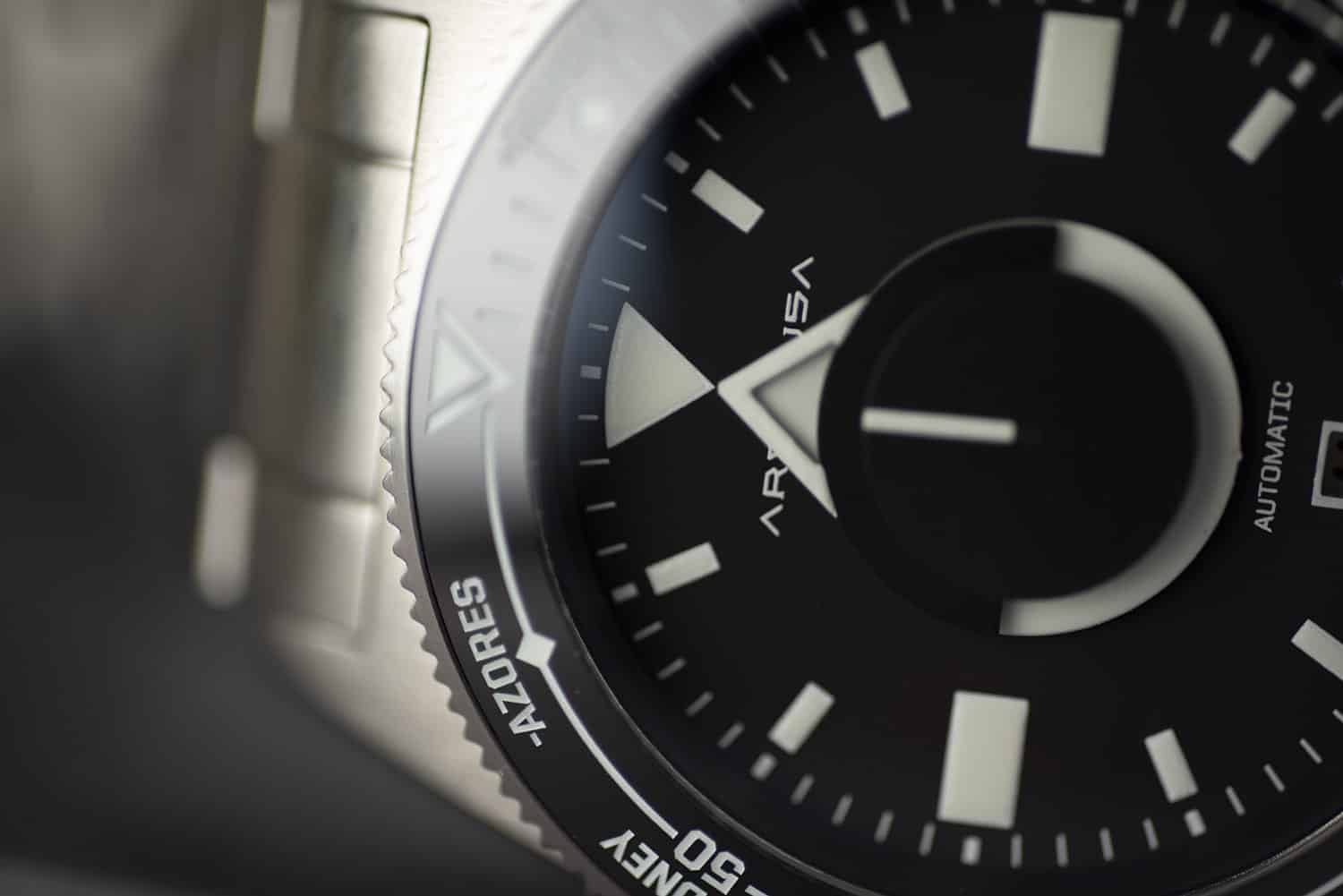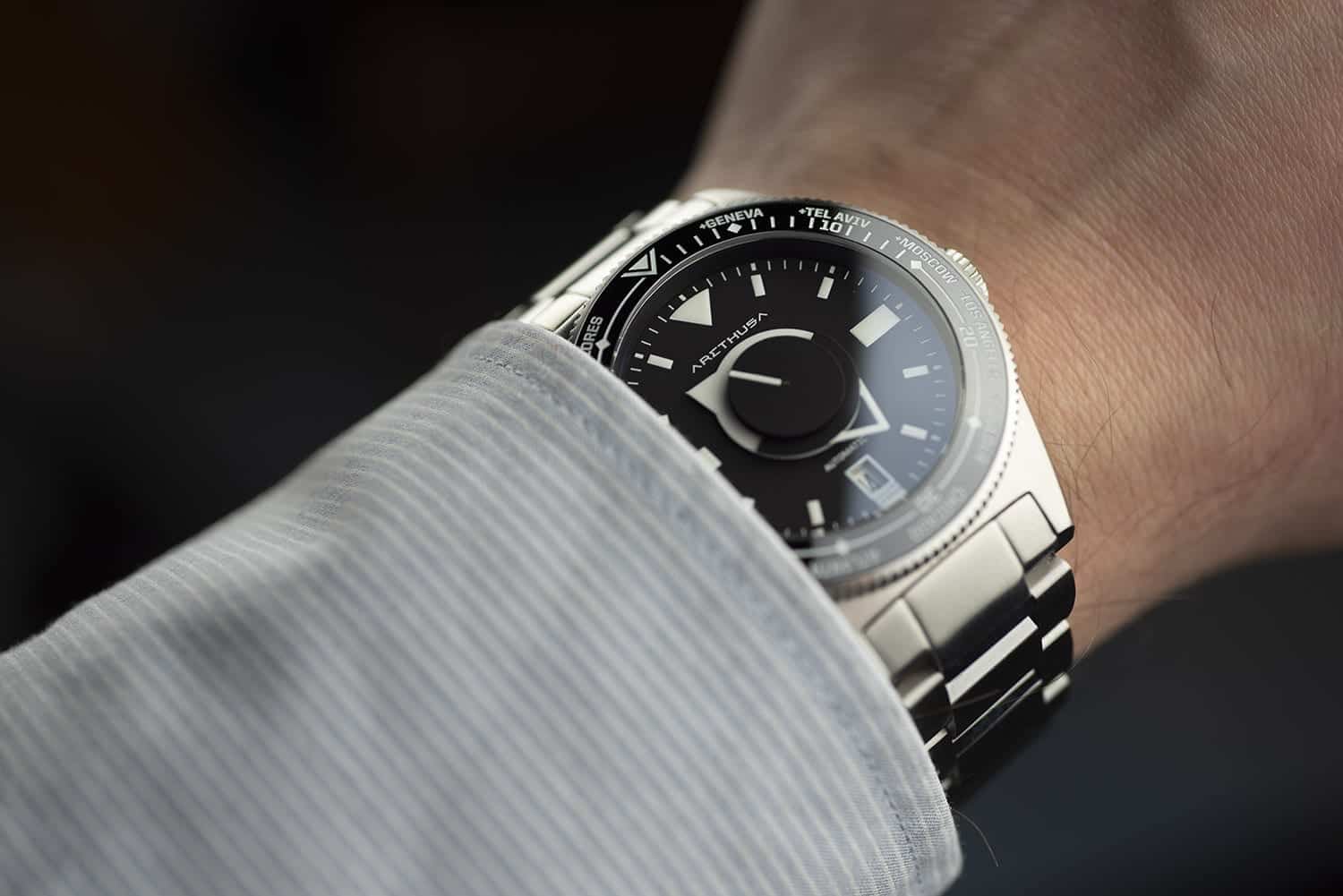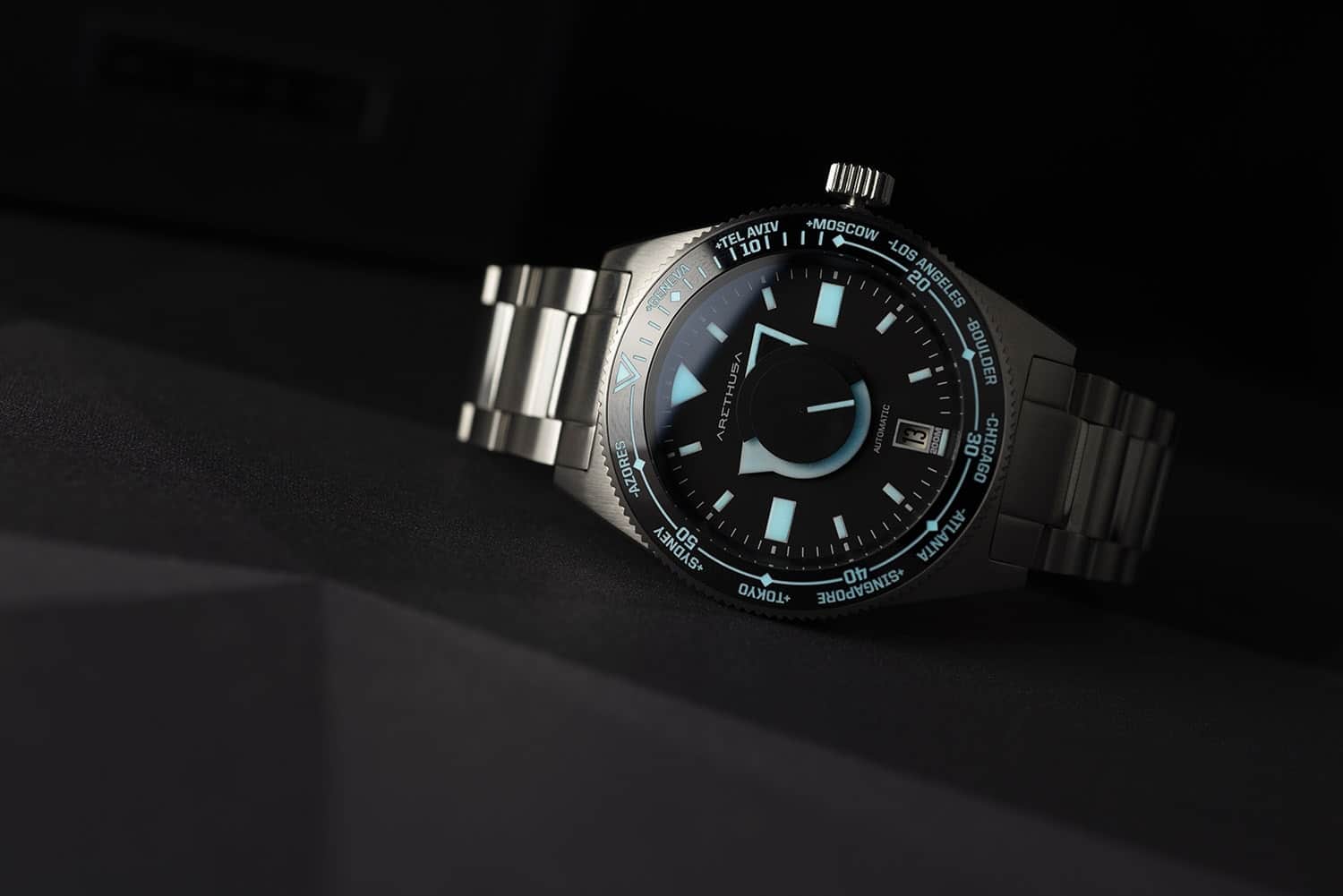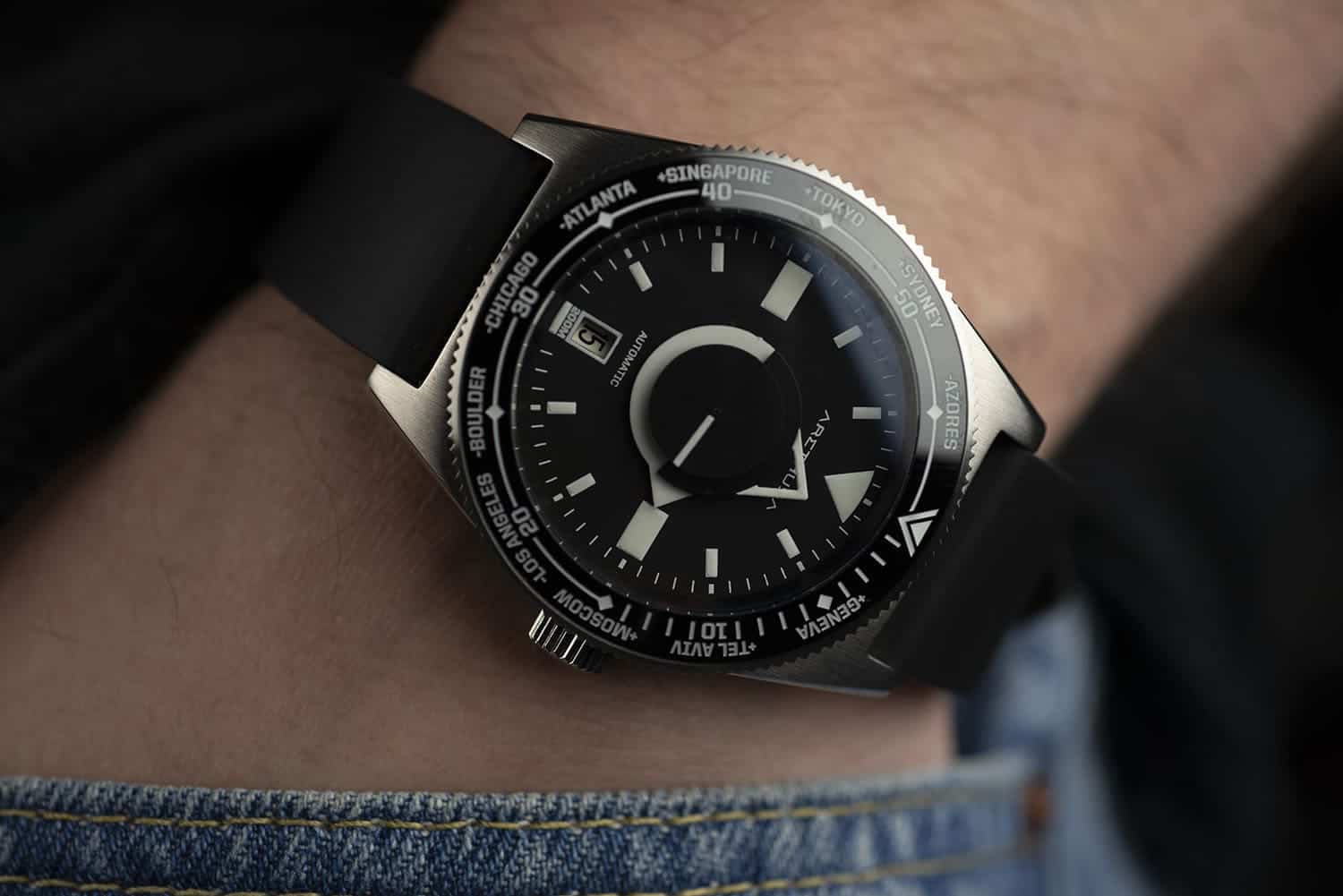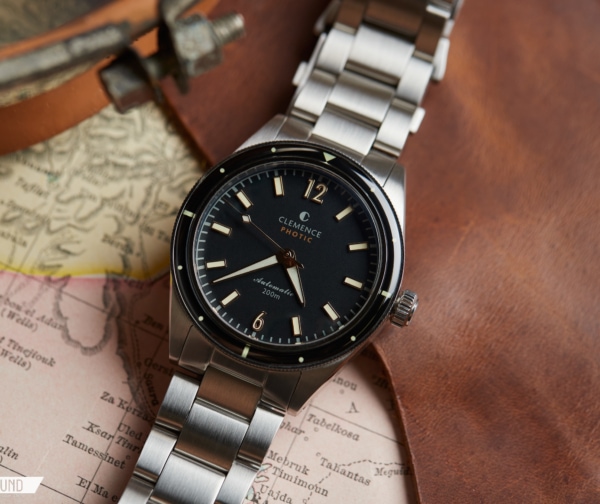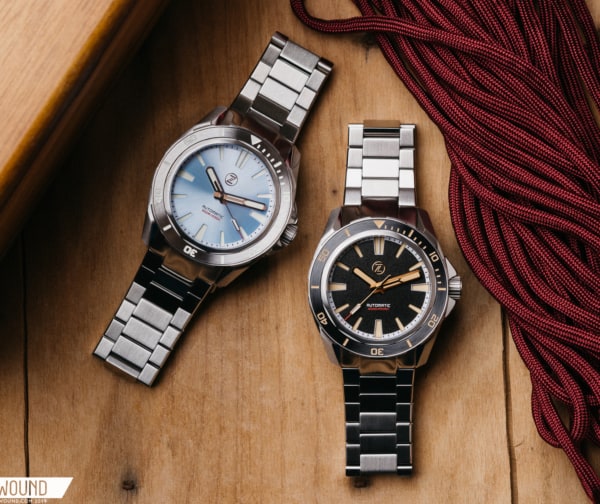Sword, stick, pencil, leaf, dauphine, cathedral – all different shaped hands, but at the end of the day all very much hand-like. I’m a sucker for something a little different, and as I mentioned in my article about mystery dials even the simplest change from hands to discs can have a significant effect. The Arethusa World Diver doesn’t really classify as a Mystery Dial as there is no mystery about what is going on, but utilizing discs appended with triangle pointers borders on the same effect created by some of those retro styled Mystery Dial watches. Arethusa is attempting to combine utility from a dive bezel and world time zones with some funky aesthetics. But does it work?
Hands-On With The Arethusa World Diver
Hands-On With The Arethusa World Diver
Hands aside, there’s a lot to like. The case is moderately sized and well proportioned, with a 40mm diameter and short lugs which extend to only 47.5mm from tip to tip. I’m surprised to find that the World Diver measures 13.5m from the case back to the top of the double domed sapphire; the overall curvature that begins with the lugs and continues through the bezel and crystal temper the tallness well. The case finishing is fairly simple with the same light brushing from the bottom lug to the top seen on both the case sides and top surface. The only polished areas are the facets which run across the top of each lug.
When it comes to the dial, the hands dominate. The three hands are stacked as normal, but take the form of discs. The disc for hours sits at the bottom of the pile with a solid white triangle pointing out towards the dial markers. Next is the black minute disc with a slightly larger, and skeletonised, white triangle extending beyond its perimeter. Finally, another black disc for the seconds sits in the middle with only a line on the disc itself to read the time against. Due to the length of each triangle I have found it slightly awkward to get the minute hand pointing exactly at one of the markers when setting the time, but once that’s done reading the time isn’t problematic at all. Granted, it takes a few goes just to get the hang of looking for triangles instead of hands, but I haven’t found that to be a long lasting problem.
The dial markers (all given a generous helping of BGW9 SuperLuminova, same with the hands/discs) are large and blocky with the triangle hour marker at the top of the dial mirroring that of the hour disc. I especially appreciate the incorporation of the date window, which is positioned at six o’clock and framed in white so as the be the same size as the markers at three and nine. If you look closely you’ll see the 200m is also incorporated into that marker.
Whereas the dial is fairly clean despite its combination of large triangles and hour markers, the bezel is very busy by contrast. Typical dive watch count-up markings are shown, with a collection of world time zones and their relative offsets from GMT around the outside. The obvious limitation of a world time bezel on a 12 hour watch when also showing only one set of time zones is that a choice has had to be made about which time zone to include. What is shown as -6 for Chicago for example could equally have been +6 for Bangladesh. Despite its business, the bezel still looks good and offers some extra sheen to an otherwise toolish and monochrome watch. The black ceramic insert can either match the black of the dial or partially reflect the light so much as to make it a struggle to read the markers.
Ticking away inside the World Diver is the Seiko NH35a, which is an entry level automatic movement. It gives a decent 41 hours of power reserve, but the two negatives to this calibre are the rather wide accuracy specs (-20 to +40 seconds per day) and the slightly lower 21,600 bph beat rate. My own preference is normally in favour of a higher beat rate which results in a smoother sweep of the seconds hand, but due to the small size of the central seconds disc here that’s much less of an issue – as it also would be on a watch with a small seconds subdial.
On my seven inch wrist the dimensions of the Arethusa World Diver just work, and the 13mm+ height isn’t noticeable. A short lug to lug length combines with a stainless steel bracelet wrapping around the wrist. The bracelet, 20mm at the lugs with a slight taper down to 18mm at the clasp, is solid without being special. As with the case, most of the bracelet is vertically brushed. The small facets of the center links are the only polished areas, and that’s probably enough to keep the watch toned down. An optional extra available to purchase from Arethusa is the black rubber strap also seen here which works very well – though any 20mm black strap would probably do a good job. The square area between the lugs added to the drilled lug holes and lack of crown guard help to give off skin-diver vibes.
I like quirky. That doesn’t necessarily mean the extravagant, but anything with a complex case, offbeat colour palette or unconventional way of telling the time will always have my attention. As it turns out, the World Diver from Arethusa barely qualifies on that basis. The case lines and dimensions are ordinary, the colours tame, and there are still three hands displaying the time. On the bracelet the World Diver feels almost formal, and that’s a good thing – I like the way the Arethusa uses unconventional hands, but they’ve done well to rein it in to an otherwise reserved and practical watch. Arethusa.









 Featured Videos
Featured Videos




